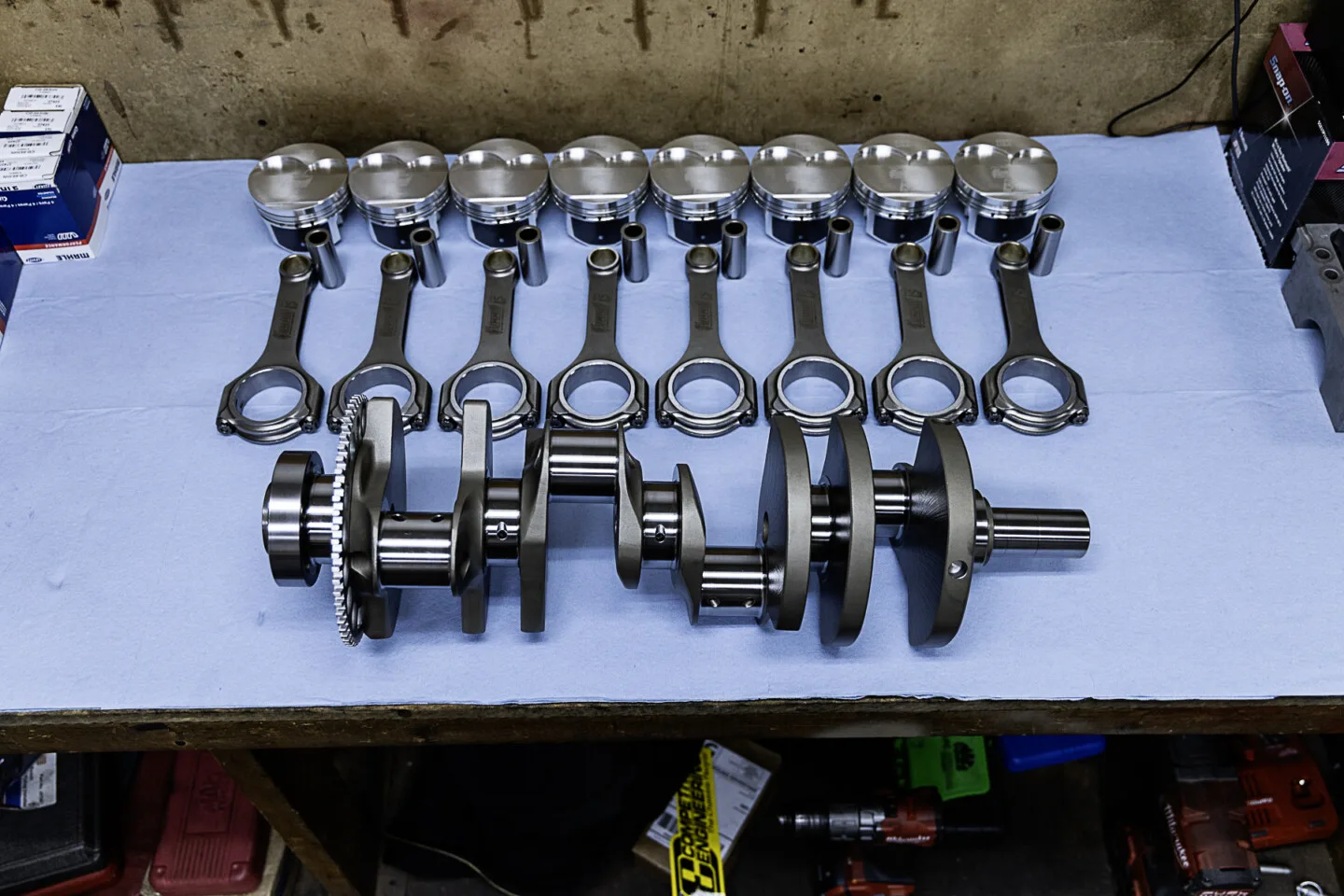The junkyard LS engine’s ability to generate big horsepower thanks to boost is well documented. There’s plenty of recipes out there that spell out how to make 800 horsepower or more using OEM parts, but there is a limit to what these parts can do. If you’ve got a little extra budget for your boosted LS engine build, using upgraded parts will go a long way to ensuring the engine will last a long time.
We plan on stuffing a turbocharged 5.3 LS engine into the Project Swedish Meatball Volvo. The block and heads were snagged from the scrap pile and were thoroughly gone through at RPM Engine & Machine. Now, we also wanted to be sure the rotating assembly and other parts of the engine were going to be reliable.
The reliability of the engine is going to be increased thanks to the new Summit Racing Pro LS rotating assembly, parts from Melling, ARP fasteners, ATI balancer, and Brian Tooley Racing valve train parts. In this article, we’re going to cover the short block assembly that was taken care of by Big 3 Racing after RPM Engine and Machine completed the machine work. We’ll dive into the rest of the engine build and other parts of the project in future articles.
A Strong Backbone With Summit’s Pro LS Rotating Assembly
We didn’t see a need to get super exotic with this engine build by using a ton of one-off parts. The Summit Racing Pro LS rotating assembly comes with a forged crank, rods, pistons, bearings, and piston rings. Summit rotating assemblies are commonly used in builds that touch the 1,200 to 1,800 horsepower range, so it will be more than enough for our little stock-displacement 5.3-liter LS.
Let’s take a look at the crank that Summit includes with these rotating assemblies. The cranks are made from 4340 forged steel and are offered in various stroke options with a 24X or 58X reluctor wheel. Each crank is core-hardened to optimize strength. They’re also tempered, and nitride surface hardened. The rod journals are lightened and the mains are gun-drilled as well.
The counterweights are profiled to reduce windage and improve engine acceleration. These cranks also feature straight-shot oiling so they can provide maximum oil flow where it’s needed most. Most important, the journals are consistently sized with an excellent finish and no taper. This makes setting bearing clearance easy and repeatable.
There’s plenty of befits to using a forged crank…
Click Here to Read the Full Original Article at DragzineDragzine…

